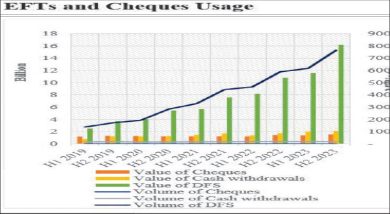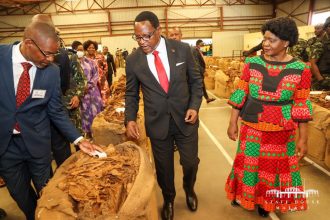NSO survey puts Malawi poverty into perspective
 The country’s urban areas are displaying an unprecedented increase in poverty levels while rural areas experience a decline in the share of those who are poor, a latest Integrated Household Panel Survey (IHPS) has said.
The country’s urban areas are displaying an unprecedented increase in poverty levels while rural areas experience a decline in the share of those who are poor, a latest Integrated Household Panel Survey (IHPS) has said.
The IHPS produced by the National Statistical Office (NSO) dated December 2014 indicates that the incidence of poverty has fallen from around 40 percent of the population in 2010 to 39 percent in 2014, an indication that a small portion of the population has graduated from poverty.
It says the population, whose total consumption is below K85 852 ($177), is deemed poor and those whose total consumption is less than K53 262 ($109) is considered ultra-poor—people in extreme poverty.
“The proportion of the population considered poor declines in the North and the South but rises in the Centre. Despite that some of these changes in the incidence of poverty across rounds appear to be fairly large, none of them is statistically significant,” reads the survey posted on NSO website.
The Zomba-based statistical body conducted IHPS for the first time through the Integrated Household Programme, which is a follow-up survey to the same households interviewed in Integrated Household Survey (IHS3).
IHPS provides and updates information on various aspects of welfare and socio-economic status of Malawi’s population presented at various levels such as national, urban-rural and region as well as disaggregated by gender.
The survey observes that despite rural areas having a significant higher poverty incidence than urban areas, the difference is dropping over time because rural areas improved and urban areas worsened.
“Across regions, the highest percentage of poor is observed in the North in both rounds. The comparison between the Centre and the South shows that in 2010 the former is considerably less poor than the latter, although by 2013 both have similar poverty rates,” says the survey.
Statistically, it says significant differences in poverty rates across regions occur only in the first round: the North is as poor as the South and both of these regions are poorer than the Centre.
The survey says that the poverty gap—the average consumption shortfall of the population relative to the poverty line—presents most of the patterns observed with the poverty incidence.
It says no significant temporal changes happen with the exception of the poverty gap squared in the South being lower in 2013 than in 2010.
At the same time, poverty in the countryside is higher than in cities, although less so in the second round, with the ranking across regions showing the North being the poorest region, while the region where poverty is the lowest is the Centre in the first round and the South in the second round.
Recently, economist Thomas Munthali, who is also country director for Innovations for Poverty Action (IPA), said only two people out of 100 graduate from poverty every five years.
This is despite Malawi’s projected economic growth compared to its neighbours being better, implying that few people are enjoying the trickle-down effects of economic growth.
Munthali said public spending in Malawi is inefficient and poorly targeted, emphasising that investment climate constraints and weak governance institutions hinder growth of the private sector, which is supposed to create much-needed jobs.
But the survey notes that indices on ultra poverty can complement the poverty indices well because they focus on the population that has a level of consumption that does not allow covering basic food needs.
It explains that the incidence of ultra-poverty decreased from 15 percent of the population in 2010 to 12 percent in 2014.
The IHPS data are representative at the national, urban/rural and regional levels and the data allow for comparable measures of household food and non-food consumption, among others.





